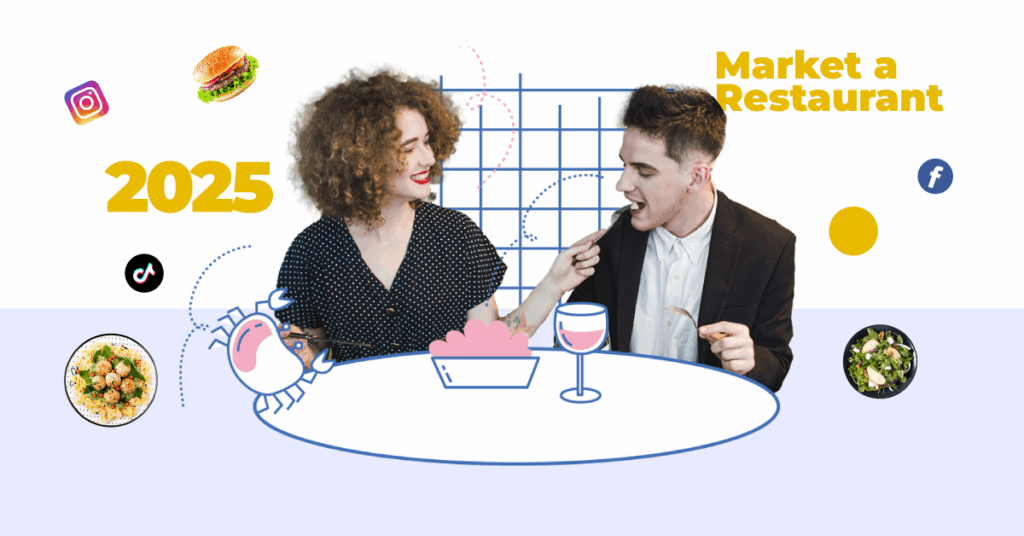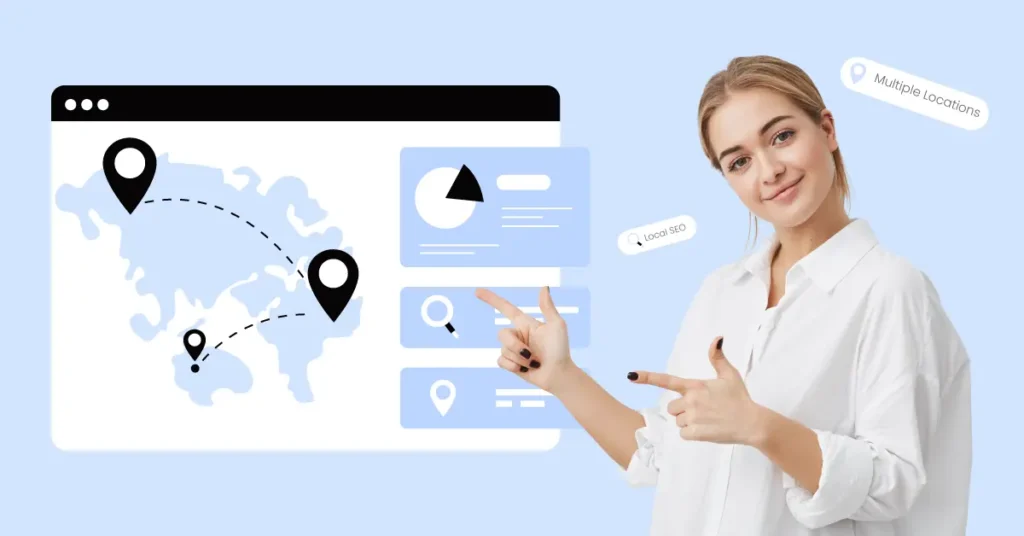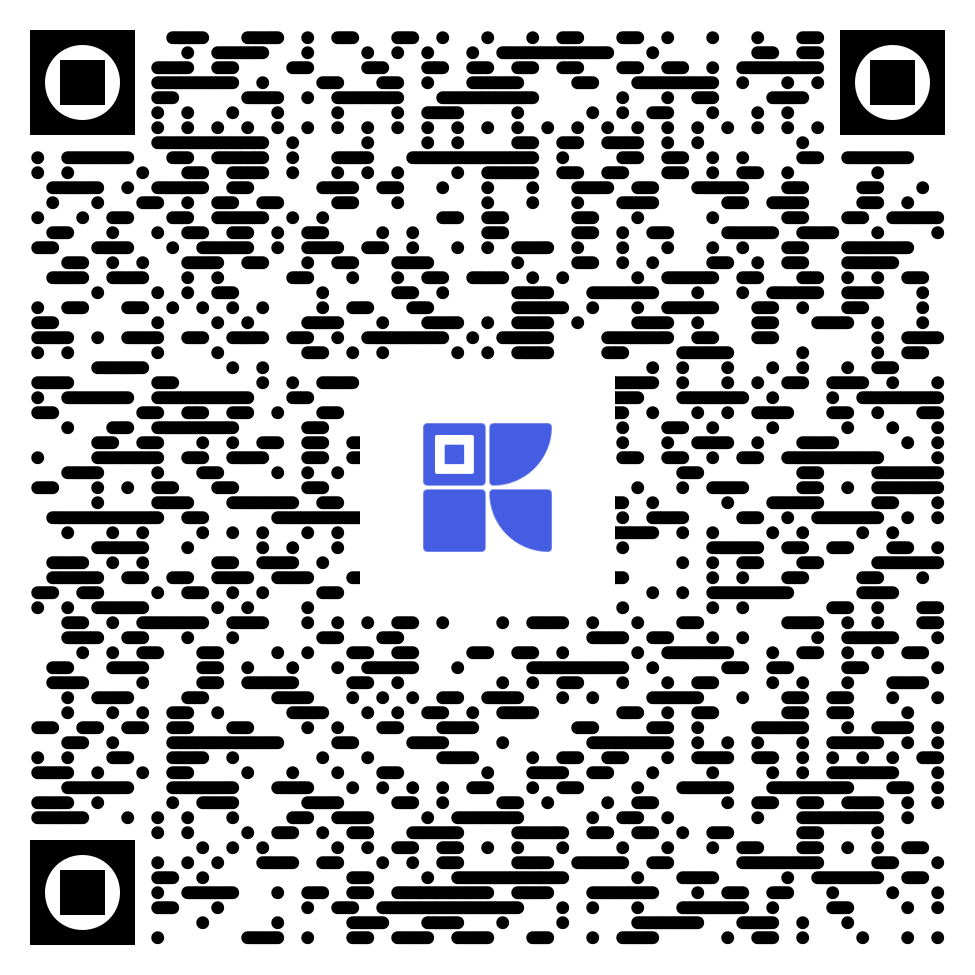Running a great restaurant is no longer enough—marketing it the right way is now non-negotiable. In 2025, more than 70% of diners read reviews before trying a new place, and nearly 90% check platforms like Google and Instagram before deciding where to eat.
According to BrightLocal, online reviews and visibility now shape first impressions more than menus or word-of-mouth.
Whether you run a brunch café or a neighbourhood diner, your ability to attract new customers depends on how easily they can find—and trust—you online. Marketing a restaurant today means mastering platforms like Google Business Profile, leveraging QR codes, and staying active on social media.
And the proof is in the search, 84% of consumers use search engines to find local businesses. That makes Local SEO one of the most powerful tools to drive foot traffic and online orders in 2025.
In this guide, we’ll break down exactly how to market a restaurant using practical, low-cost strategies that build trust, boost visibility, and keep your tables full.
Optimize Your Google Business Profile to Drive Local Traffic
A fully optimized Google Business Profile (GBP) is one of the easiest and most effective ways to market your restaurant locally and create an online presence. Here’s how to do it step by step:

Step 1: Claim and Verify Your Google Business Profile
Go to Google Business and search for your restaurant. If it already exists, claim it. If not, create a new profile from scratch.
- Use your real business name—avoid adding extra keywords.
- Make sure your name, address, and phone number (NAP) are accurate and consistent across the web.
- Select the most relevant primary category (e.g., Thai Restaurant, Coffee Shop, Pizza Delivery).
Step 2: Add High-Quality Photos
Photos significantly influence dining decisions. According to Google, businesses with photos get 42% more requests for directions and 35% more website clicks than those without.
- Upload clear, high-resolution photos of your food, drinks, staff, and ambiance.
- Add photos for different times of day (morning brunch, evening lighting).
- Update your images frequently to keep your profile fresh.
Step 3: Use Local Keywords in Your Description
Help Google—and customers—find you more easily by adding location-relevant phrases.
- In your business description, naturally include keywords like “vegan brunch in Chicago” or “late-night ramen in Austin.”
- Mention specialties, ambiance (e.g., rooftop dining, live music), or dining style (fast-casual, fine dining).
- Keep the tone conversational but informative—think of it as your restaurant’s digital elevator pitch.
Step 4: Keep Information Consistently Updated
Outdated info frustrates customers and hurts your local rankings.
- Keep your hours accurate (especially for holidays or special events).
- Add direct links to your online ordering, menu, and reservation platform.
- Enable features like “Order Online” or “Reserve a Table” through platforms like Toast, OpenTable, or Square.
Step 5: Respond to All Reviews and Questions

Reviews matter. So does your response. According to BrightLocal, 89% of consumers are more likely to use a business that responds to reviews.
- Respond politely and professionally to both positive and negative reviews.
- Thank happy customers and offer to make things right for unhappy ones.
- Answer questions posted to your profile to show you’re active and attentive.
A well-optimized Google Business Profile acts like a digital storefront. Done right, it increases your visibility in local search results and builds trust with new customers—all before they even visit your restaurant.
More Google Reviews = More Diners: Here’s How to Get Them
In today’s digital-first dining landscape, reviews aren’t just feedback—they’re currency. When potential customers search for restaurants, Google prominently features ratings and review snippets. The more authentic, recent, and positive your reviews, the more likely people are to trust and choose your restaurant.
According to BrightLocal, 76% of consumers “always” or “regularly” read online reviews for local businesses, and 87% of them used Google to do it. That makes Google reviews one of the most powerful marketing assets for your restaurant in 2025.

Here’s how to collect more high-quality reviews the right way:
1. Ask at the Right Time
Timing is everything. The best moment to request a review is right after a positive dining experience—when your customer is still engaged and satisfied.
- Train your staff to casually ask happy guests to leave a quick review.
- Add a polite ask to your receipts or final check (e.g., “Loved your meal? Share it on Google!”).
2. Use QR Codes to Make It Effortless
QR codes eliminate friction. Instead of asking diners to search for your business, give them an instant path to your review page.
- Place QR codes on:
- Table tents
- Menus
- Receipts
- To-go packaging
- Make sure the QR links directly to your Google review form—not just your listing.
You can use tools like Krofile to generate smart QR codes that link reviews, menus, loyalty sign-ups, and more—all from one branded profile page.
3. Never Offer Incentives
It may be tempting to offer a discount or free dessert in exchange for a review—but this goes against Google’s guidelines. Doing so can lead to reviews being flagged or removed.
- Keep all reviews organic and unbiased.
- Instead of incentives, focus on making the experience exceptional—great service naturally leads to positive reviews.
4. Be Consistent—Recent Reviews Matter More
A restaurant with dozens of old 5-star reviews may still fall behind in search if they don’t have recent activity. According to Inc., businesses with 10 or more recent reviews can see up to a 52% increase in revenue.
- Aim to gather at least 5–10 new reviews each month.
- Highlight good reviews in your stories or posts to show appreciation.
5. Respond to Every Review
Engaging with reviews shows you care—and signals credibility to new customers.
- Thank guests for positive feedback with personalized replies.
- Respond to negative reviews constructively and publicly resolve concerns.
This boosts trust, encourages others to leave feedback, and improves your local ranking.
Pro tip: Embed your Google review link in your Instagram bio, email signature, and on your website. The more entry points you offer, the more reviews you’ll collect—naturally.
6 Proven Tips to Get More Reviews for Your Restaurants
1. Run Local Promotions and Events That Attract Diners

When it comes to restaurant marketing, digital channels matter—but in-person experiences are what turn occasional diners into loyal fans. In a crowded market, the restaurants that stand out are often the ones creating memorable moments worth talking about.
According to OpenTable, 67% of diners are more likely to try a restaurant because of a local event. That means hosting the right experiences can drive new foot traffic, boost repeat visits, and spark word-of-mouth referrals—all without huge advertising budgets.
Why Local Events Work
Local promotions tap into three things customers crave:
- Connection: People want to feel part of a community.
- Discovery: Diners love trying something new and exclusive.
- Convenience: When an event happens close to home, there’s less friction in deciding to attend.
Types of Events to Consider
Your events don’t have to be elaborate to be effective. Even small experiences can create buzz if they align with your brand:
- Live Music Nights: Fill your midweek evenings with acoustic sets or jazz trios.
- Trivia or Game Nights: Turn slow nights into community gatherings.
- Cooking Demos or Chef’s Table Experiences: Give diners a behind-the-scenes look.
- Seasonal Menu Launches: Introduce new dishes with a tasting party.
- Themed Dinners: From wine pairings to cultural celebrations, themed menus feel special.
These formats help showcase your personality and give guests a reason to visit outside their normal routine.
How to Promote Your Events
Promotion is where many restaurants drop the ball. To get noticed, combine digital reach with local buzz. Here’s how:
- List on event platforms:
- Eventbrite for easy RSVPs
- Meetup to connect with hobby groups
- Facebook Events for social sharing and reminders
- Leverage your owned channels:
- Send an email announcement to your subscriber list.
- Post countdowns and teasers on Instagram Stories.
- Add banners to your website and Google Business Profile.
- Collaborate locally:
- Partner with nearby businesses for cross-promotion.
- Tag local influencers or community groups to help spread the word.
Tips for Making Events Successful
A well-run event can leave a lasting impression. Keep these tips in mind:
- Limit capacity: Creating a sense of exclusivity drives demand.
- Offer small incentives: For example, a complimentary appetizer for early RSVPs.
- Capture content: Post photos and videos live, then share highlights to extend your reach.
- Follow up: Thank attendees and invite them back for future events.
Done well, local events aren’t just about filling tables for a night—they build trust and loyalty that lasts long after the music stops.
2. Leverage Instagram and TikTok for Visibility

In 2025, if your restaurant isn’t showing up on diners’ social feeds, it might as well be invisible. Instagram and TikTok have become the modern word-of-mouth, where your food, atmosphere, and story are discovered long before anyone ever walks through your door.
According to Square, 90% of diners browse Instagram before choosing where to eat. The good news? You don’t need a huge budget or a professional production crew to get noticed—you just need consistency and authenticity.
Share Content That Makes People Hungry
Your social feeds are your visual menu. Make sure every post looks inviting, but also feels real. Instead of polished ads, focus on content that tells your story:
- Behind-the-scenes videos: Show your chef plating dishes or prepping fresh ingredients.
- Short-form Reels and TikToks: Capture moments like cocktails being poured, desserts being torched, or reactions from happy customers.
- User-generated content (UGC): Repost photos and videos your guests tag you in—it builds trust and shows you appreciate your community.
When you share these moments consistently, your followers start to feel invested in your restaurant’s journey.
Use Local Hashtags and Geotags to Get Discovered
Hashtags and location tags help your content appear in local search results and recommendations. For example, if someone browses #DenverBrunch or #SeattleFoodie, your posts can show up right alongside bigger brands.
Try a mix of:
- General hashtags: #Foodie, #BrunchGoals, #DateNight
- Location hashtags: #ChicagoEats, #AustinRestaurants
- Niche tags: #VeganComfortFood, #GlutenFreeDesserts
Always geotag your restaurant location to make it easier for nearby diners to find you.
Collaborate with Micro-Influencers
Influencer partnerships don’t have to cost thousands. In fact, micro-influencers (local foodies with 5,000–20,000 followers) often drive more engagement because their audiences trust them.
Here’s why collaborating with them works:
- Their content feels genuine—not like a paid ad.
- Their followers are usually local and more likely to visit.
- They’re often happy to trade a free meal or tasting experience for exposure.
When you invite an influencer in, encourage them to share Stories, Reels, and posts tagging your location. You’ll reach hundreds (or thousands) of local diners organically.
Show Up Consistently
The algorithms on Instagram and TikTok favor accounts that post regularly. You don’t have to overwhelm yourself—start with:
- 3–4 posts per week
- Daily Stories during busy hours
- 1–2 Reels or TikToks each week
Over time, this steady stream of content builds visibility, keeps you top of mind, and attracts new customers who feel like they already know you.
In a world where diners scroll before they book, social media visibility is your restaurant’s most powerful stage. Use it to share what makes you unique, and watch your tables fill up—one swipe at a time.
3. Offer Online Ordering and Easy Reservations

In 2025, diners expect instant convenience. Whether they’re planning a Friday night out or ordering lunch to the office, frictionless online ordering and reservations are no longer optional—they’re a basic requirement.
According to Nation’s Restaurant News, 60% of customers say they return to restaurants that make ordering and booking easy. That means if your competitors offer a simpler experience, you risk losing repeat business.
Make Ordering and Booking Effortless
Start by auditing how a guest interacts with you online. Can they:
- Book a table directly from Google or your Instagram bio?
- Place an online order in just a few taps?
- Find clear links to your menu and reservation page without digging around?
If any of these steps require too much effort, you’re creating friction that pushes diners elsewhere.
Embed links in all the right places:
- Your Google Business Profile—add direct booking and ordering buttons.
- Your website’s homepage—feature clear “Order Now” and “Reserve a Table” calls to action.
- Your Instagram and Facebook bios—use link tools to drive traffic straight to ordering platforms.
Use Trusted Platforms That Integrate Seamlessly
Modern diners don’t want to download an app just to place an order or call to ask if you have a table. The easiest solution is integrating with platforms built for restaurants:
- Toast – for point-of-sale, online ordering, and delivery.
- Square for Restaurants – for takeout, curbside pickup, and contactless payments.
- OpenTable – for reservations with automated confirmations and reminders.
These tools keep everything in one place, from payment processing to customer management, so you can offer a seamless experience.
Why It Matters More Than Ever
Today’s diners are used to on-demand everything—rides, groceries, entertainment. Restaurants that match that convenience build trust and loyalty. When the ordering or booking process feels smooth, guests feel confident coming back again and again.
It’s simple: the easier you make it to order or reserve, the more often people will.
4. Launch a Loyalty Program That Actually Works

Winning a new customer is great—but turning that first visit into a habit is where the real growth happens. In 2025, loyalty isn’t just about punch cards and discounts. Diners expect experiences that feel personal, rewarding, and worth sharing.
Digital loyalty programs make it simple to stay connected, build trust, and keep your restaurant top of mind. When done well, they don’t just drive repeat business—they create a community around your brand.
Make Rewards Emotional, Not Just Financial
While discounts are helpful, the best loyalty perks go beyond money off. They tap into feelings of exclusivity and appreciation, which research shows are more likely to drive long-term loyalty.
Instead of offering only “10% off your next order,” think about experiences like:
- A complimentary chef’s table dinner after 5 visits
- Priority reservations for special events
- Access to limited-time menu items before the public
These kinds of rewards create emotional connections that keep guests coming back.
Use Digital Tools That Simplify Loyalty
Modern loyalty platforms make it easy to track rewards and communicate with customers without extra admin work. Two excellent options designed for restaurants are:
- Belly: A digital loyalty program that lets you customize rewards and track customer visits seamlessly.
- Fivestars: A platform combining loyalty rewards with automated marketing and customer engagement tools.
Both integrate with your POS system and allow customers to check in with a phone number, card, or mobile app.
Encourage Guests to Opt In—Everywhere
The best loyalty program in the world won’t work if no one joins. Make it easy and visible:
- Display QR codes on menus, table tents, and receipts linking directly to your sign-up page.
- Invite customers via SMS or email after their first visit.
- Mention your loyalty program on your Google Business Profile and social media bios.
Keep It Simple and Consistent
Overly complicated programs are a turnoff. Make sure:
- Rewards are clear and easy to redeem.
- Customers get notified whenever they earn something.
- You communicate consistently—send reminders, special offers, and thank-you messages to keep engagement high.
Pro tip: Pair your loyalty program with your online ordering system so customers earn rewards whether they dine in or order to-go.
The right loyalty program doesn’t just reward frequent visits—it makes every customer feel valued, recognized, and excited to return.
5. Collaborate With Local Businesses to Expand Your Reach

Sometimes your best marketing partner isn’t a platform or an ad—it’s another local business that shares your audience. Cross-promotions are a powerful, low-cost way to get your restaurant in front of new customers who already trust the businesses around you.
Done well, local collaborations can:
- Fill your tables on slower days
- Generate word-of-mouth buzz
- Build community goodwill
- Keep marketing fresh without extra ad spend
Find Partners That Share Your Audience
Look for businesses whose customers naturally overlap with yours. For example:
- Gyms and yoga studios: Health-conscious diners who appreciate fresh, clean food.
- Barbershops and salons: People looking to treat themselves after a service.
- Boutiques and coworking spaces: Professionals who love good coffee and lunch spots.
- Wellness centers or spas: Guests who value premium experiences and relaxation.
The goal is to create a win-win—where everyone adds value without competing.
Creative Ways to Cross-Promote
You don’t have to overthink it. Start simple:
- Joint Discounts:
- Show a receipt from a partner business to get 10% off your next meal.
- Offer bundled packages, like a spa visit and a prix fixe lunch.
- Event Collaborations:
- Host pop-up dinners or tastings inside a boutique or coworking space.
- Partner on themed nights (e.g., wellness workshops followed by a healthy dinner).
- Co-Branded Flyers and Signage:
- Place flyers or table tents in each other’s locations.
- Share QR codes that link directly to booking pages or menus.
- Social Media Tagging:
- Cross-promote each other on Instagram and Facebook.
- Run a giveaway together to grow both audiences.
Example:
A coffee shop partners with a coworking space to offer a “Remote Worker Happy Hour”, with half-price lattes and discounted workspace rentals every Thursday afternoon.
Keep It Authentic
The most effective collaborations feel natural and genuine. Make sure:
- Both brands align in values and quality.
- Offers are relevant and actually valuable to customers.
- You communicate clearly and consistently about the partnership.
Pro tip:
After a successful promotion, gather data—track how many new guests visited, what offers worked, and how much revenue you generated. Use these insights to refine your next collaboration.
When you team up with other trusted local brands, you don’t just share customers—you create community. And community is what keeps people coming back long after the first visit.
6. Use QR Codes to Bridge Offline and Online Engagement

Not long ago, QR codes were a novelty. Today, they’re a staple of modern restaurant marketing—the fastest way to turn a real-world moment into online action.
According to Statista, 59% of US diners have scanned a restaurant QR code recently, whether to browse a menu, leave a review, or claim a reward. That’s a huge opportunity to connect with your guests even after they leave the table.
Why QR Codes Matter
QR codes make it effortless for diners to:
- Leave a Google review while their experience is still fresh.
- Join your loyalty program with one tap.
- Follow your social media profiles.
- View your latest promotions or seasonal menu.
Instead of hoping people remember you later, you’re giving them a frictionless way to engage in the moment.
Where to Place Your QR Codes
Visibility is everything. Make sure codes are easy to find and scan:
- Menus: Printed or digital menus with scannable codes for specials or online ordering.
- Table Tents: Centerpiece cards linking to your review page or loyalty sign-up.
- Receipts: A friendly nudge to leave a review or claim a reward.
- Front Door Signage: Capture walk-by traffic by linking to your menu or booking page.
When you integrate QR codes naturally into your space, guests don’t feel like they’re being “sold to”—it simply feels convenient.

What to Link To
Be intentional about where your codes send people. Some high-impact options include:
- Your Google Review Page—make it effortless to share positive feedback.
- Loyalty Program Sign-Up—let guests join your rewards program before they leave.
- Social Media Profiles—grow your following while customers are still engaged.
- Online Ordering or Reservations—capture future visits with minimal clicks.
Pro tip:
Test different placements and calls to action. For example, you might find that QR codes on table tents drive more reviews, while codes on receipts get more loyalty sign-ups.
When used well, QR codes don’t just bridge offline and online—they turn everyday interactions into long-term customer relationships.
These Smart Tools Can Make Marketing Easier For You
If you want to connect your offline diners to your online presence, these platforms make it simple:
Krofile
- Create branded QR codes linking to menus, reviews, reservations, or loyalty sign-ups.
- Display and collect reviews in one place.
- Perfect for restaurants that want a “digital front door” experience with minimal setup.
Beaconstac
- Dynamic QR codes you can update anytime without reprinting.
- Analytics dashboard to track scans, locations, and devices.
- Integrates with Google Analytics, Zapier, and CRMs.
QR Code Generator Pro
- Customizable designs to match your brand colors and logo.
- Bulk creation options for large-scale marketing.
- Download in multiple formats for menus, table tents, and signage.
Flowcode
- Fast-loading QR codes optimized for mobile.
- Real-time engagement data and retargeting tools.
- Popular with restaurants, event venues, and brick-and-mortar retailers.
Scanova
- Create QR codes that link to PDFs, images, or interactive landing pages.
- Schedule automatic content updates (e.g., daily specials).
- Robust tracking and analytics.
Bitly
- Simple QR code creation tied to Bitly short links.
- Built-in analytics for tracking clicks and scans.
- Great for restaurants that already use Bitly for link management.
Menu Tiger
- Specialized platform for restaurants to create QR code menus.
- Supports ordering, payment, and tipping right from the menu.
- Easily update menu items without reprinting codes.
Each of these tools has free or affordable plans, making them accessible for local restaurants that want to improve visibility without a big marketing budget.
Conclusion: Small Steps, Big Results
More diners don’t magically appear—they’re earned through visibility, trust, and a seamless experience that keeps your restaurant top of mind.
The good news? You don’t need a massive restaurant marketing budget or an agency to make it happen. You just need to start.
Focus on small, consistent actions:
- Optimize your Google Business Profile so customers can find you easily.
- Ask for reviews and respond to them to build credibility.
- Engage your local audience with social media, loyalty programs, and community events.
- Bridge offline and online touchpoints with smart tools like QR codes.
When you combine these efforts, every guest interaction becomes an opportunity to deepen trust and inspire the next visit.
Remember: small actions today create full tables tomorrow.
Start simple. Stay consistent. And watch your restaurant grow.
Ready to make it easy for diners to find, trust, and love your restaurant?
Try Krofile today to create smart QR codes, showcase your reviews, and turn every customer interaction into lasting loyalty—all without complicated software or big marketing budgets.







